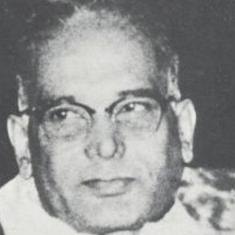One of the most insidious effects of terror attacks is the confusion that they sow, and the way in which they magnify the divisions within society. In part, this is the strategy of the terrorist, especially when the target is civilians.
But what happened in Quetta was calculated. Somebody hatched a plan to first assassinate the president of the Balochistan Bar Association, then have a suicide bomber wait at the hospital where the body would inevitably be taken, anticipating that large numbers of lawyers would congregate there.
So the first question naturally arises: why target lawyers? Was it just to produce a large body count, or was there a specific reason why lawyers were selected for this gruesome deed?
Weaving a tale
Even before the bodies had been fully counted and identified, an official narrative of sorts reared its head. This is a conspiracy against the China Pakistan Economic Corridor, hatched by RAW. Following this claim, a tale follows: the idea is to destabilise the country and derail the budding partnership with China that Pakistan is so carefully nurturing.
But the official narrative, stated thus, makes little sense. First of all, how do they know that this act was perpetrated by RAW with the intention to derail CPEC? Considering the narrative emerged faster than the dust settled, was it driven by any empirical findings in the aftermath or was it simple surmising?
Second, how does targeting lawyers destabilise the country and contribute to the derailment of CPEC? Given how calculated the strike was, whoever carried it out would naturally also have calculated the impact it was going to have. And it’s hard to see how the impact could in any way contribute to the derailment of CPEC.
Another narrative emerged in parliament, and was echoed in a gathering of the legal fraternity held in Quetta on Wednesday. How could this happen given how saturated Quetta is with military presence, with intelligence operatives on every street, as parliamentarian Mehmood Khan Achakzai pointed out? The attack, regardless of who the perpetrators were, represented a failure of security and intelligence, which is largely in the hands of the military in Quetta.
Even before the bodies had been fully counted up and identified, an official narrative of sorts reared its head.
Then a third narrative made a meek attempt to insert itself in the national conversation. Tweeted by Ali Mohammad Khan, Member of the National Assembly from Pakistan Tehreek-e-Insaf, it based itself totally on a scurrilously speculative thought. It’s worth quoting in full, so here’s what the man from Mardan said:
Why is it so that whenever we in PTI Launch a major PRO PAK🇵🇰 movement against #Rigging or #Corruption either #APS happens or #QUETTA Blasts
— Ali Muhammad Khan (@Ali_MuhammadPTI) August 8, 2016
The thought was echoed by at least one small-time TV anchor, but fortunately it didn’t get very far.
How much has been discovered about the identity of those who carried out the attack, except for two claims of responsibility? One came from the Jamaatul Ahrar, a breakaway faction of the Tehreek-i-Taliban Pakistan, and another from the militant Islamic State group. But the investigations from the blast site have not yet yielded up any clues that are publicly known, so we really don’t have any dots to connect. The only dots to connect are those in Mr Khan’s head.
And this story, of confusion and colliding narratives and asinine interventions to try and hijack the visceral sentiments unleashed by such a tragedy towards overtly political purposes, has been continuing for well over a decade now. After every strike, the same litany of statements pours forth – "we will not allow terrorists to succeed" and "all institutions of the state will give a coordinated response" etc.
Seeing straight
Let’s be clear about a couple of things first before connecting any dots. The terrorists are not asking anyone’s permission to proceed. The state should have awakened to its obligations to secure the population more than a decade ago. And if any external agencies are using the terrorists to attack Pakistan, they are spoiled for choice when it comes to militant groups to use for the purpose, given that the state in Pakistan has been in the business of creating and harbouring militant groups for many years now.
It is natural for confusion to prevail in the aftermath of such an attack. But instead of connecting dots that don’t exist and pointing fingers in every direction, the first order of business should be to study the site of the attack and find out, empirically and verifiably, who exactly sent the attackers and who ordered the hit. Those who do not have the evidence on this front should refrain from surmising.
But here’s the biggest thing: to win this war we have to stop lying to ourselves about why we are in it in the first place. The Americans were told a big lie by their leadership in the aftermath of 9/11 when they asked "why do they hate us?" They were told that the terrorists hate American values and freedom.
That wasn’t true. What the American public were never told was all the things their military and intelligence agencies had been up to in their name over the decades. And that lie ate out their mission from day one, initially by making them arrogant, and later by sapping their morale.
Likewise, the Pakistani public is unaware of what all has been done by their own state in their name, and so long as that lie relating to the nexus between the security establishment and the militant underground is left unacknowledged, they will continue to flock to ignorant and sham narratives following each attack. The terrorist threat is distilled reality. It exists independent of our will and volition, and cannot be wished away nor can it be defeated with delusions and lies. A decade into this war, and we’re still scratching our heads.
This article first appeared on Dawn.










